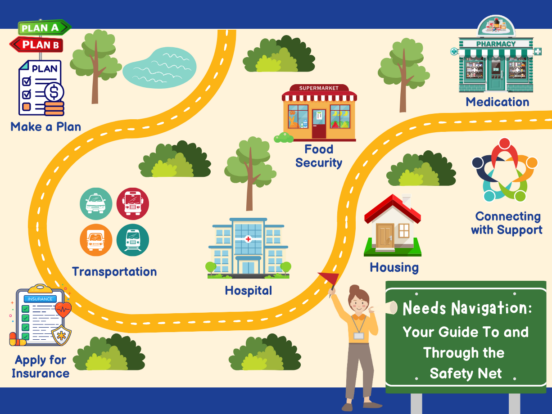Needs Navigation

Jamie Trotter writes about health literacy and the challenge of understanding health insurance.
By Jamie Trotter
Premium versus Deductible, In-Network versus Out-of-Network, HMO versus PPO, FSA versus HSA. Do you know the difference in these common terms? What about Copay versus Coinsurance? A little more challenging, right? Medicare Part A, B, C, and D, drug formularies…
The complexity of understanding and navigating health insurance has dramatically shifted even for most educated, working adults. For seniors, this challenge is exponential. As one of the primary caretakers for my grandmother, this is a reality I know all too well. While she is covered, helping her navigate billing and coverage issues among the many doctors she sees can be a cumbersome task, and I work in healthcare! With the creation of the federally operated health insurance marketplaces, created under the Affordable Care Act (ACA), millions of Americans are now enrolling in health coverage outside of their employer. Yet, studies show there is a substantial knowledge gap and understanding of what these common words found in insurance plans actually mean.
The ACA defines health literacy as “the degree to which an individual has the capacity to obtain, communicate, process and understand basic health information and services to make appropriate health decisions.” Low health literacy has substantial economic implications. Analysts at George Washington University estimated low health literacy costs the US economy at least $106 billion annually. The term and challenge with health insurance literacy, which focuses on the understanding of insurance coverage, more specifically, was brought to the forefront by the ACA in recent years. America’s Health Insurance Plans states that “nearly nine out of ten adults have difficulty using health information to make informed decisions about their health.” Another study published in 2013 found that nearly half of Americans did not understand basic health insurance terms. Within these statistics, disparities exist among vulnerable populations such as low socioeconomic status and the aging. A 2014 study by the Urban Institute for Health Policy found that gaps in health insurance literacy across racial/ethnic groups vary substantially and were most pronounced among low-income and uninsured populations.
NPAF, through funding by the Robert Wood Johnson Foundation, is participating in a series of outreach efforts around Conversations in Cost of Care. What we know is that patients that face socioeconomic barriers to care and who are underinsured are at the greatest risk for suffering financial toxicity. The stigma patients feel in having conversations around costs of their medical care is likely exacerbated by the burden of their inability to adequately understand and navigate their health insurance. Their lack of understanding serves as one of the many barrier’s patients face to having these important discussions with one’s care team.
Patient Advocate Foundation (PAF), our direct services sister organization, recognizes the difficulty consumers face in navigating health insurance. PAF’s work to aid consumers in health insurance literacy includes targeted campaigns during Open Enrollment, patient resources such as Words That Matter, which provides patients with a healthcare glossary of common insurance terms and their definitions and Chatter That Matters, a series of short videos that discuss prevalent insurance issues. The goal of these resources is to ensure patients and consumers have increased knowledge and are better equipped to make informed decisions when using their health insurance benefits.
While there is still progress to be made to improve access to resources, just the sheer acknowledgement that a gap exists in not just health literacy, but insurance literacy is proving to be valuable. Ensuring resources are being made available to patients is a step in the right direction. Yet, there is still much work to be done.
